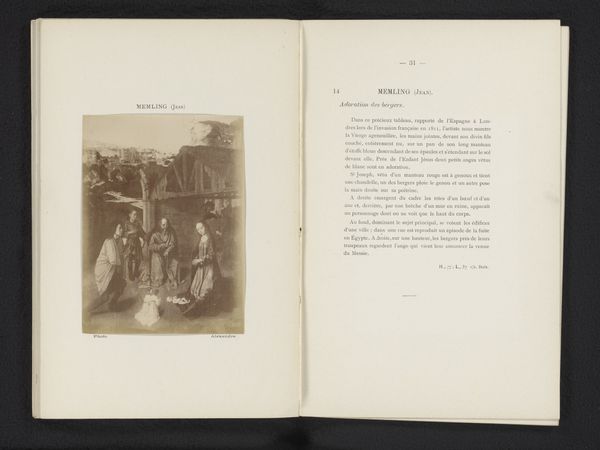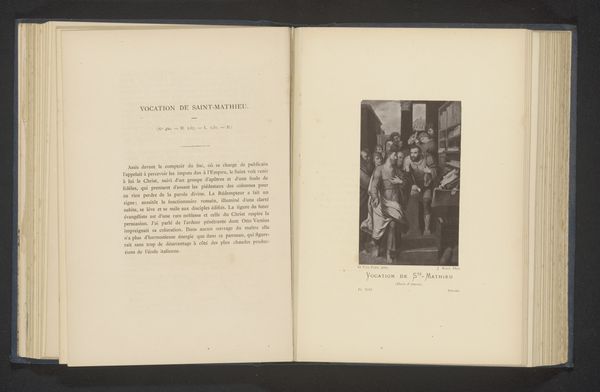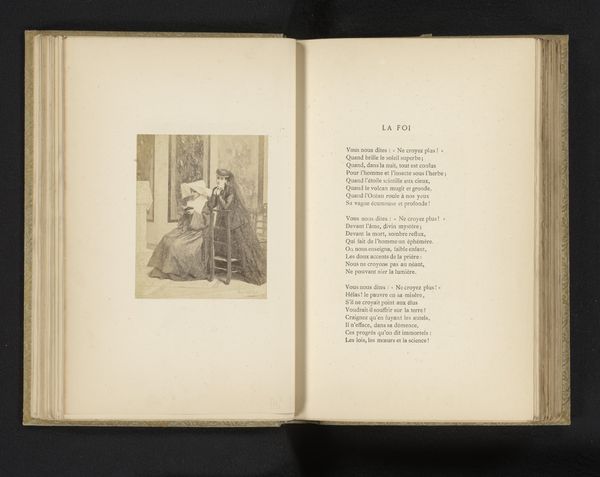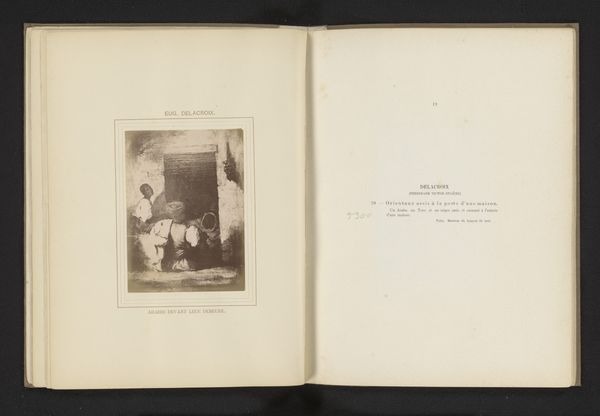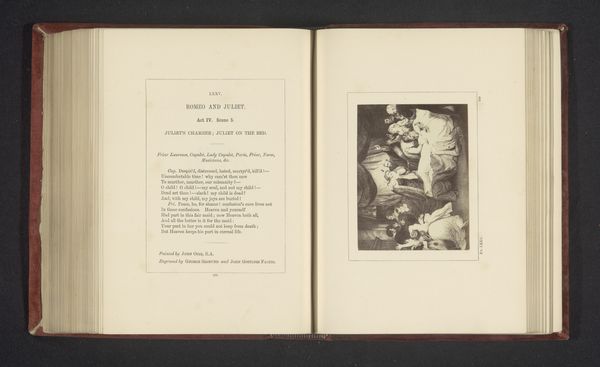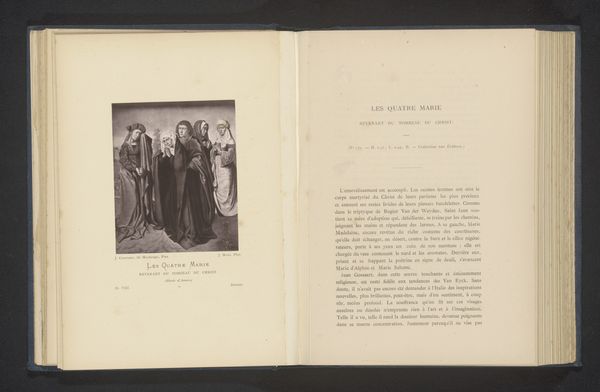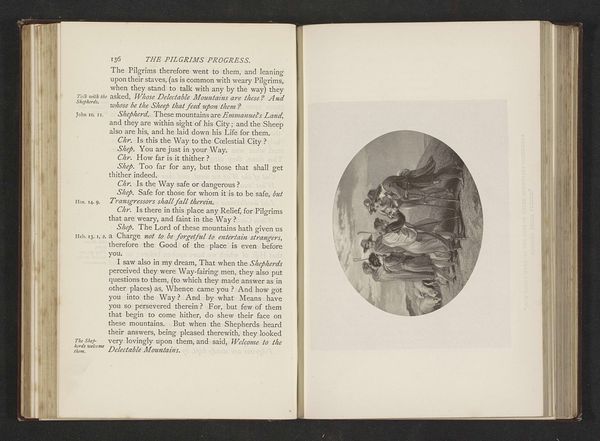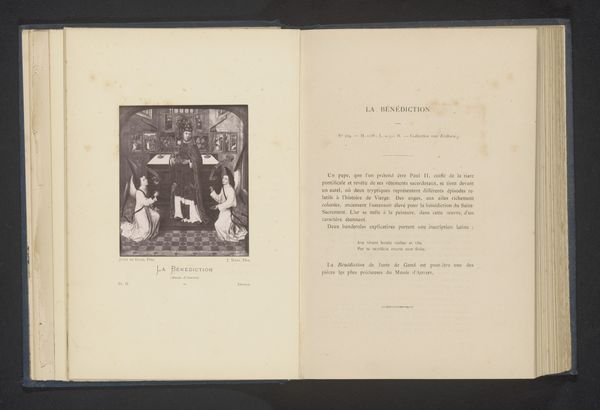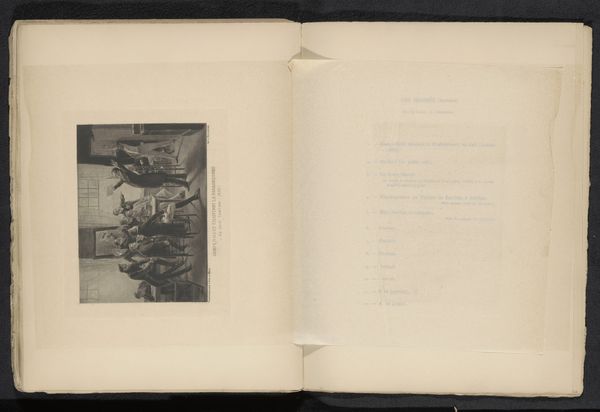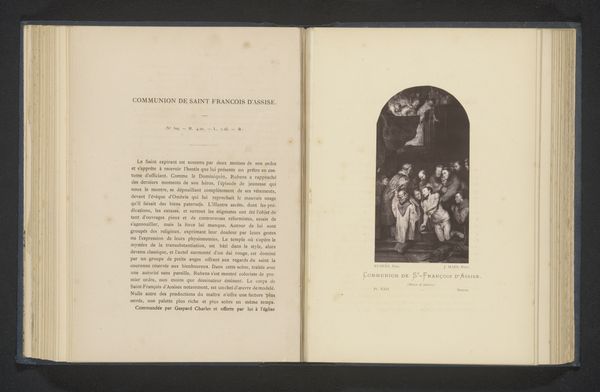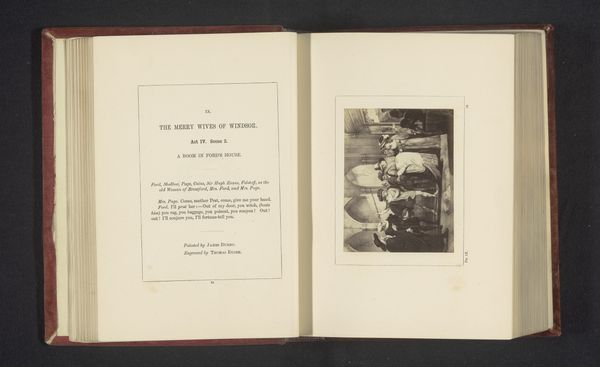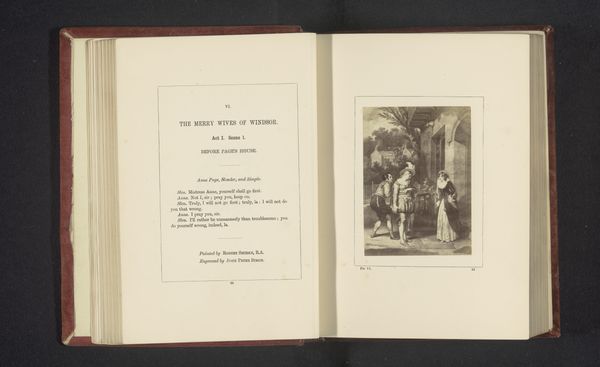
Fotoreproductie van een schilderij van bezoekers bij een tentoonstelling van harnassen before 1884
0:00
0:00
print, photography
#
portrait
# print
#
photography
Dimensions: height 135 mm, width 95 mm
Copyright: Rijks Museum: Open Domain
Curator: We are looking at a photomechanical print of visitors at an arms and armor exhibition, dated before 1884. It’s interesting as it's a reproduction of what I assume is a photograph, which in turn depicts what appears to be a painting on display within the exhibition! Editor: That's quite a layering of reproduction. It also speaks of the popularity of armour displays during the Victorian Era, a popularity of antiquarian interests linked to imperial and colonial concerns. What intrigues me is the use of photographic printing. How might that process and its accessibility impact the art world? Curator: Well, consider the material implications. Photography provided a seemingly objective means of documentation. Prior, detailed engravings, woodcuts, etchings took far more effort and skill, labor, time and by implication more value. Suddenly, printed images were plentiful. Now you have wider consumption of imagery and a democratisation of access. So who profits? Editor: I see your point. Mass reproduction diminishes aura, value, in some ways, while generating visibility for these artists and for those artisans and laborers constructing elaborate exhibition designs. How were such images like these typically disseminated? Curator: Prints like these were widely circulated in illustrated magazines, books, and as individual souvenirs. It fueled the machinery of cultural production. Did access to reproduced images enhance interest and appreciation, or dull and distort what makes artworks special? Editor: That's something I'll have to consider more. I never thought about the means of artistic production in this way! Curator: I hope I gave you a place to start! Remember to examine all the contributing elements of any piece!
Comments
No comments
Be the first to comment and join the conversation on the ultimate creative platform.
